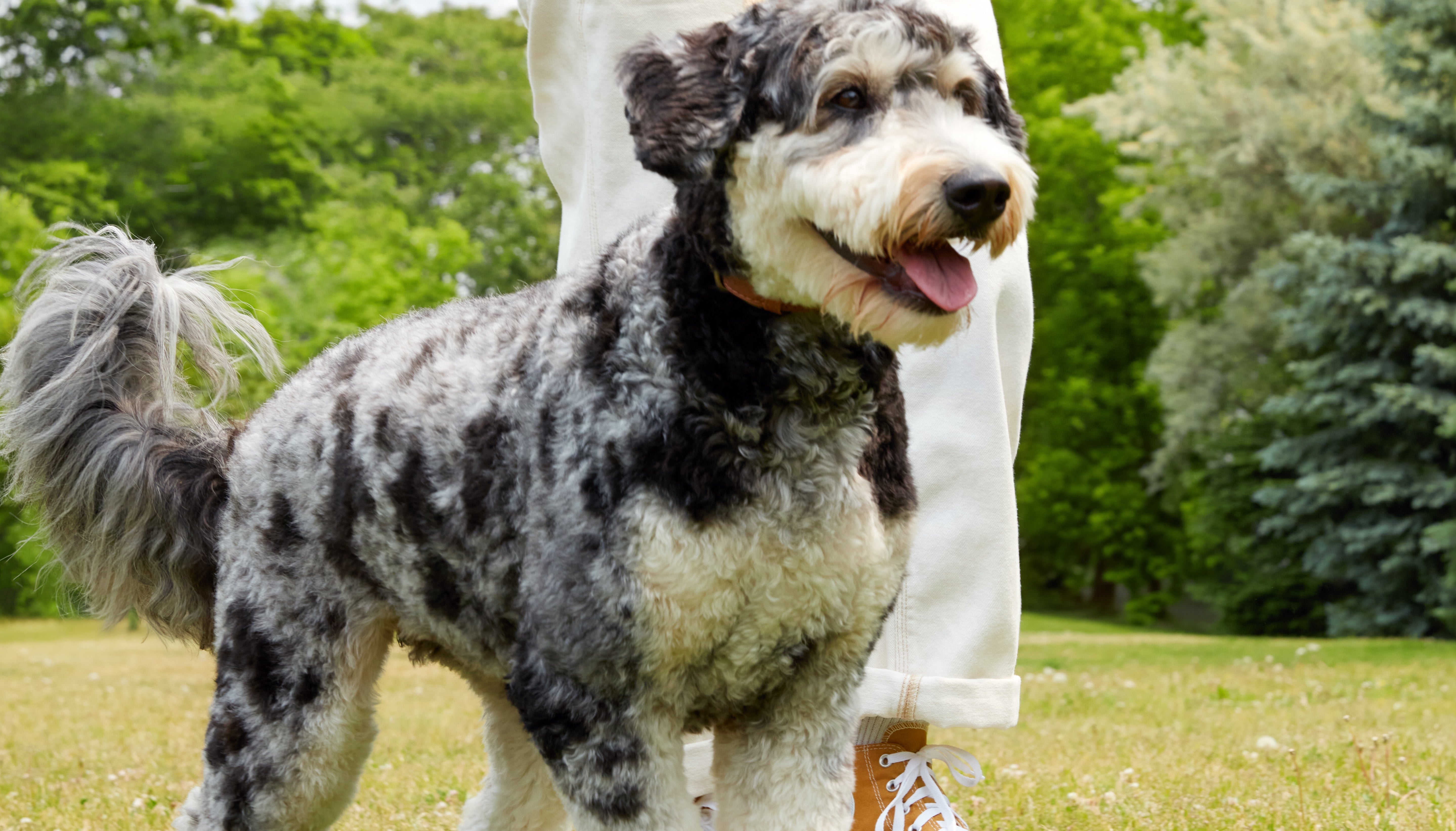Ready to take your pup on your next camping trip and enjoy the great outdoors together? Dog camping can be a fantastic way to spend time with your furry friend. With a few tips for camping with a dog and some planning, you can make the most out of the experience.
Can I Bring My Dog Camping?
You can absolutely bring your dog camping and make memories you will never forget. By planning ahead of time and getting some practice in at home, you can start to prepare your pup for the great outdoors.
When taking a dog camping, there are some things you want to keep in mind:
- Your dog’s age and temperament: Is your dog adventurous and responds well to new situations or anxious? Young puppies and senior dogs with health issues may not be quite ready for camping or just require a bit more prep work than others.
- The Campsite: Some places won’t allow dogs, while others will be as dog-friendly as they come with waste disposal, areas for walks, and even dog washes.
- Dog Camping Gear: You will likely need to stock up on some dog camping essentials before your first adventure.
- Vet Check: Is your pup healthy and up-to-date on their vaccinations and parasite prevention?
- Practice at Home: You can do plenty to get your pup ready for camping from the comfort of your own home. Set up a tent in the backyard and let them sniff and explore.
Finding a Dog-Friendly Campsite
The first step to camping with your dog is to find a dog-friendly campsite. There’s nothing worse than driving to your campsite only to see the sign “No Pets Allowed.” Before you head off, do your research. Look for campgrounds with dog parks or areas where your pup can roam and play.
Some great resources for finding dog-friendly campsites include:
- BringFido: The website lets you search for dog-friendly campsites throughout the US (and worldwide) by location, facilities, and activities. You can also read reviews from other dog parents and get a real feel for the campsite.
- National Park Service: Many national parks welcome well-behaved, leashed dogs in campgrounds, parking lots, and paved paths. There are usually restrictions on where they can go, so it’s a good idea to check ahead.
Every national park can set its own dog rules, with Mount Rainier having stricter restrictions, for example. Dogs can’t go on the trails within the national park, in the wilderness, or inside buildings. This means that some of the more iconic sights off the path can be off-limits for dogs in many national parks.
Top Tips For Camping With Your Pup
Camping with your dog can be full of outdoor fun, adventures, fresh air, and nature. Here are our top tips on how to camp with dogs.
Go to The Vet First
Before your first camping trip together, head to the vet, who can help prepare your pup for a safe adventure. It’s essential to visit your vet for a few reasons:
- Vaccinations: Is your pup up-to-date on vaccinations? Depending on your location, this could include rabies and Lyme disease.
- Parasite Prevention: Getting outside with your pup can be the start of a great adventure, but ticks and fleas are common. Chat with your vet about preventing ticks and fleas while camping.
- Health Check-Up: Your vet can perform a general check-up to make sure your dog is healthy and ready to go. If your pup feels unwell, your vet may recommend holding off on the trip until they are back to full health.
- Microchipping: Although it’s not a requirement, a microchip can help you find your dog if you become separated while camping.
While it’s not technically part of a vet check-up, a little hair trim can help your pup stay cooler in warmer temperatures. Consider trimming nails so they don’t get caught or snagged outside.
Know The Essentials
Alongside your standard camping supplies, getting some dog essentials for camping is a good idea to make the experience safe and enjoyable, including:
- Bowls for water and food
- Dog kibble and wet food
- Dog bed
- Leash and harness
- Collar with ID tag
- Plenty of poop bags
- Dog first-aid kit
- Extra towels
- Medications (if any)
- Tick and flea prevention
- Dog life jacket (if you’re going to be in/around water)
- Chew toys
- Stake or tether
- Dog treats
Pack Plenty of Toys
While your pup will love the opportunity to roam and play outside, bringing plenty of toys is a good idea for a few reasons:
- Stimulation: A familiar toy can help keep your dog entertained when they are stuck at the campsite while you’re cooking or relaxing, helping to prevent boredom.
- Playtime: Playing tug-of-war or fetch with your pup is great for burning off some energy and bonding.
- Comfort: A toy from home can help provide comfort and security if your pup is feeling anxious in a new environment.
You don’t need to bring a whole cupboard full of toys but choose a few favorites you know they already love.
Provide Extra Hydration
Hydration is important for your dog’s health, especially outdoors during camping adventures. Your dog needs plenty of water, even if you’re just hanging out at the campsite. If you’re going for a hike and exploring, your pup will need extra water. Hotter weather and dry air can also increase water needs.
Here is what to bring to be a hydration hero for your pup:
- Portable water container (some come with an in-built bowl or dispenser)
- Collapsible bowls for day hikes and walks
- Large camp bowl for refills at the campsite
Refresh your dog’s water supply often and monitor their intake. If it’s a hot day, consider bringing a portable shade canopy for extra protection.
Always Keep Your Dog Secure
Campsites typically set their own leash rules. Some may require your dog to be on a leash at all times, as they might not have a fence but could have a designated off-leash area for dogs. Also, when camping with a dog, the unfamiliar location can be overwhelming at first, and a leash can stop them from bolting or chasing.
Some dogs may also not get along with other dogs, and keeping your dog secure means everyone can have a smoother and peaceful camping experience. Use a secure tether while at your campsite and keep your dog inside the tent with you while sleeping.
Never Leave Your Pup Unattended
Campsites can contain hidden dangers like thorny bushes or hot coals from campfires and other risks. One of the top tips for camping with dogs is never leaving your pup unattended.
Safety hazards, the escape risk of a new environment, and being alone in a new place can be stressful for your pup. Planning and keeping your dog supervised can help create a fun and safe trip.
Look Out For Wildlife
When researching how to camp with a dog, knowing about the local wildlife and what you could encounter is essential. So, when you have a spot in mind, look into the area, find out what wildlife you could see, and learn the best safety precautions. For example, if you’re in bear territory, you need to be very careful with food storage and always carry bear spray.
As well as wildlife encounters, be careful of stagnant water, algae, and potentially poisonous plants. Try to keep your dog from drinking stagnant water or rivers that could have blue-green algae. This type of algae can be really dangerous and even fatal to dogs if ingested. Many campgrounds and park authorities monitor for blue-green algae and post warnings on their websites and social media pages. Don’t hesitate to ask park rangers or staff at the campsite for the latest information on blue-algae risks in the area.
Organize Dog-Friendly Activities
There are plenty of dog-friendly activities you can plan to do while camping:
- Hiking
- Swimming
- Playing fetch
- Exploring nearby parks
- Going to the beach
If your pup is calm and comfortable on boats, go for a paddle and try canoeing or kayaking. Make sure your pup has a life jacket and a paw-friendly surface. For these types of activities, start slowly. The wobbliness of the boat can feel strange to dogs, so a slow introduction can help them get more comfortable.
Not every attraction is dog-friendly, so do your research to double-check where you can and can’t take your dog. Whatever you do, bring water, take breaks, be aware of your surroundings, and have fun.
Protect Your Pup’s Paws
When taking dogs camping, it’s important to consider paw protection. The pads on your pup’s paws are sensitive, and hot pavements, sharp rocks, ice, broken glass, and debris can damage them.
There are some things you can do to help protect your pup’s paws:
- Invest in some dog booties
- Try a vet-recommended paw wax
- Carry out regular paw checks throughout your trip
- Be aware of the type of terrain you’re walking on
- Stick to trails with dirt or grass
- Give your pup time to adjust to your chosen paw protection before your trip
Opt For Co-Sleeping
Some campgrounds require your dog to sleep with you in your tent. Co-sleeping can be great for keeping your pup comfortable and secure. Plus, your pup’s body heat can help keep you warm at night, which is a bonus, especially in colder weather. When your dog’s inside, you don’t have to worry about them bumping into any roaming wildlife, giving you peace of mind.
Bringing your dog camping might be just the adventure you’re after. With a bit of planning, it can be a safe, stress-free, and exciting experience. To keep your pup’s tail wagging, don’t forget to pack your dog’s favorite dog food from Jinx and keep your pup energized for every trail.

